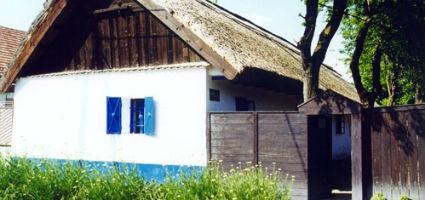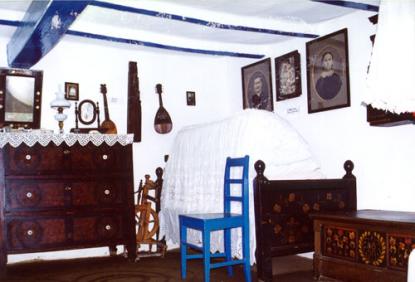2024. April 24. Wednesday
Petőfi House and Memorial Museum - Slovakian Region House - Kiskőrös
 |
Address: 6200, Kiskőrös Szent István utca 23.
Phone number: (78) 414-255, (78) 312-566
E-mail: petofimuzeum@koroskabel.hu
Opening hours: Tue-Sun 9-12, 13-16
|
Museum tickets, service costs:
|
Ticket for adults
|
200 HUF
|
|
|
Ticket for students
|
100 HUF
|
|
|
Ticket for pensioners
|
100 HUF
|
Among the exhibitions organized in the inner space the so-called 'clean room' recalls the memory of the atmosphere of celebration. The bed made with bedspread used on unique occasions can be seen here. The corner bench and the table covered with handmade tablecloth appear in the kitchen. The nails in the beam hold the skirts of women. The snow-white furnace emits heat. The 'teka' on the wall is extremely valuable. The most important documents and the cultural treasures of the family, for example the Bible and the calendar were kept there.

The kitchen had an open chimney. With its tools it looks as if it was still in use nowadays; as if the housewife had just left the kitchen for a minute.
The inner room looks more like an exhibition. It is made up of two of the most significant colors of the exhibition: blue and white. The most significant themes appear as if they were showcases. The readings of the Slovakian population of the area are placed here based on the Tranoszcius. These are unambiguous memoirs of the Evangelic culture of the area.
The objects represent the dyed collection of samples, the richness of motifs of the everyday clothing. The young couple dressed show credibly the clothing of celebrations of our ancestors. The valuable tools are separated into groups. The most unique of all is the selection which shows a game of a family of many generations. The pictures that have turned yellow show the hierarchy of the family, the mutual honor towards each other, the tolerance, and the self-conscious subservience.
The country house mirrors the economic unity since the chamber storing the different tools can also be visited. Animals played an important part in the lives of the families. The beeves were important sources of food besides being indispensable helpers. In the shed the visitors may see the tools of everyday life such as the ram used at processing grape.
Mrs. Kispál Dr. Ilona Lucza

The kitchen had an open chimney. With its tools it looks as if it was still in use nowadays; as if the housewife had just left the kitchen for a minute.
The inner room looks more like an exhibition. It is made up of two of the most significant colors of the exhibition: blue and white. The most significant themes appear as if they were showcases. The readings of the Slovakian population of the area are placed here based on the Tranoszcius. These are unambiguous memoirs of the Evangelic culture of the area.
The objects represent the dyed collection of samples, the richness of motifs of the everyday clothing. The young couple dressed show credibly the clothing of celebrations of our ancestors. The valuable tools are separated into groups. The most unique of all is the selection which shows a game of a family of many generations. The pictures that have turned yellow show the hierarchy of the family, the mutual honor towards each other, the tolerance, and the self-conscious subservience.
The country house mirrors the economic unity since the chamber storing the different tools can also be visited. Animals played an important part in the lives of the families. The beeves were important sources of food besides being indispensable helpers. In the shed the visitors may see the tools of everyday life such as the ram used at processing grape.
Mrs. Kispál Dr. Ilona Lucza
|
Related activities
|
|
